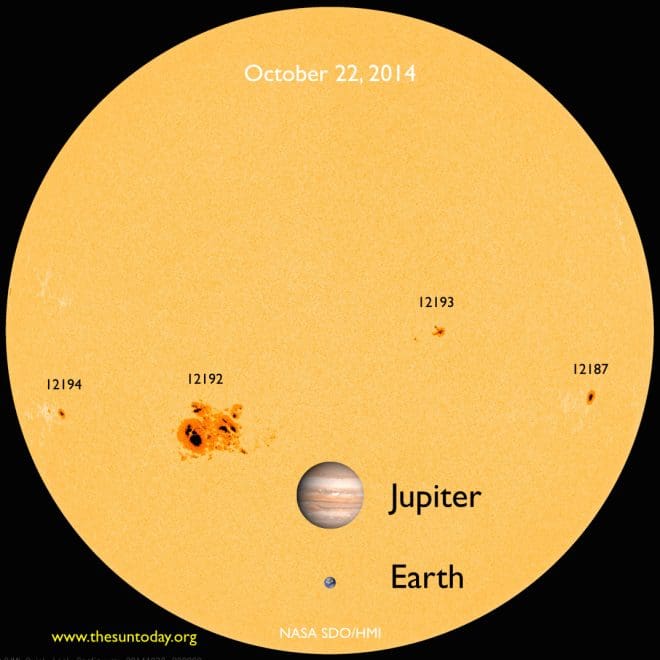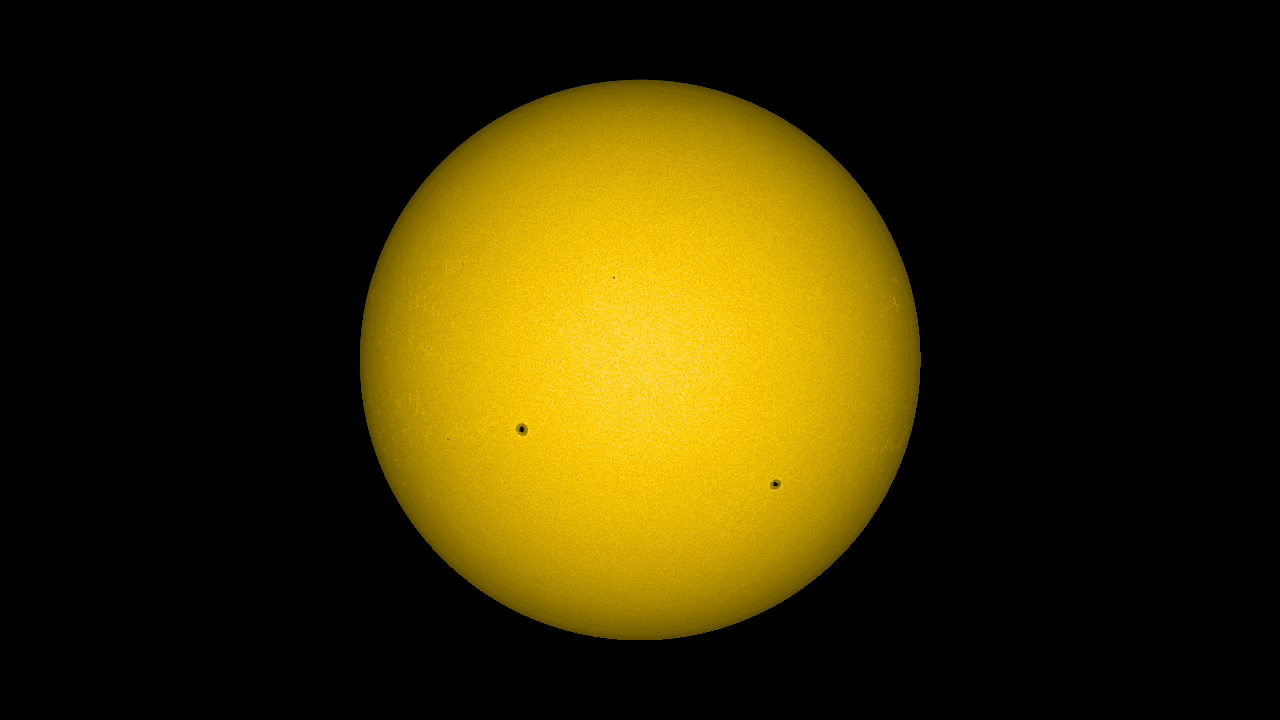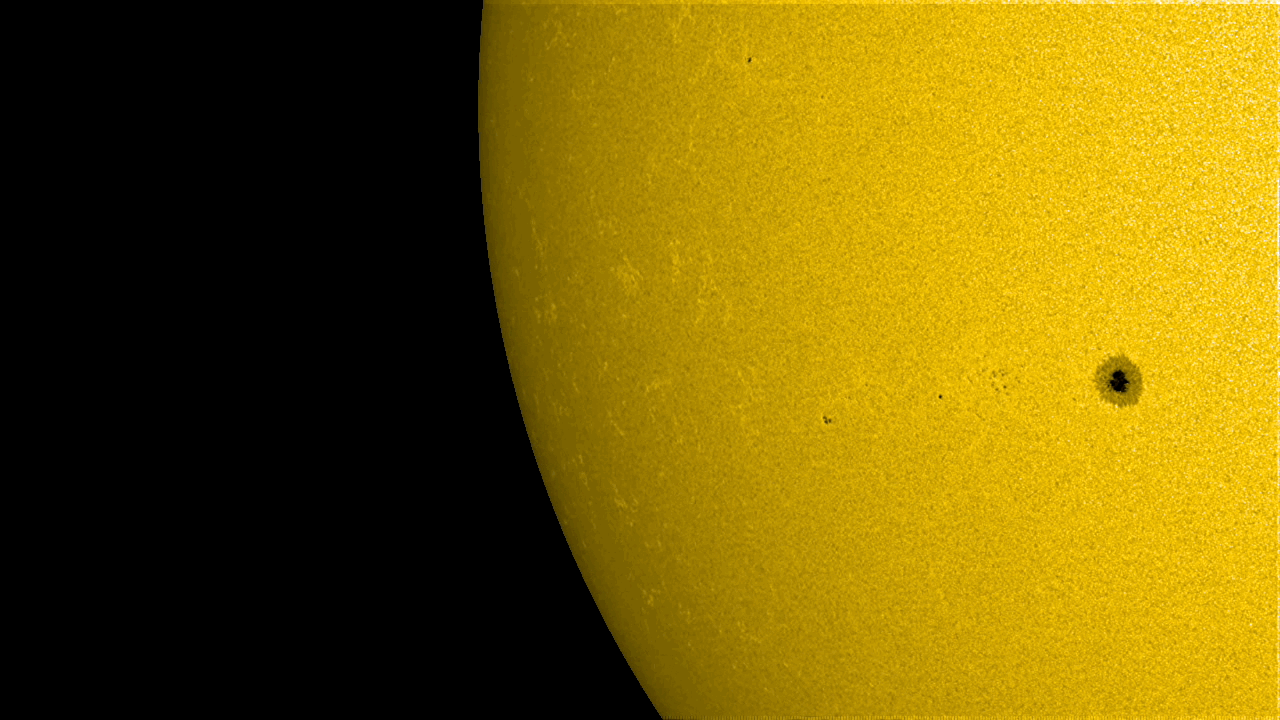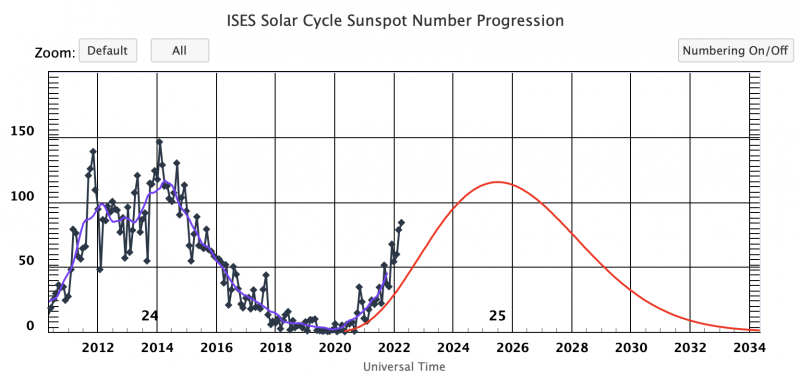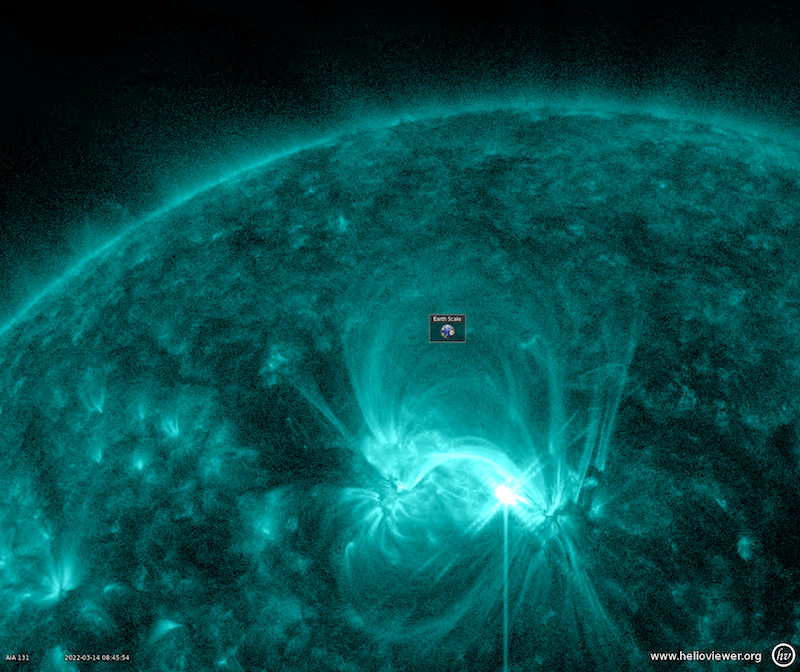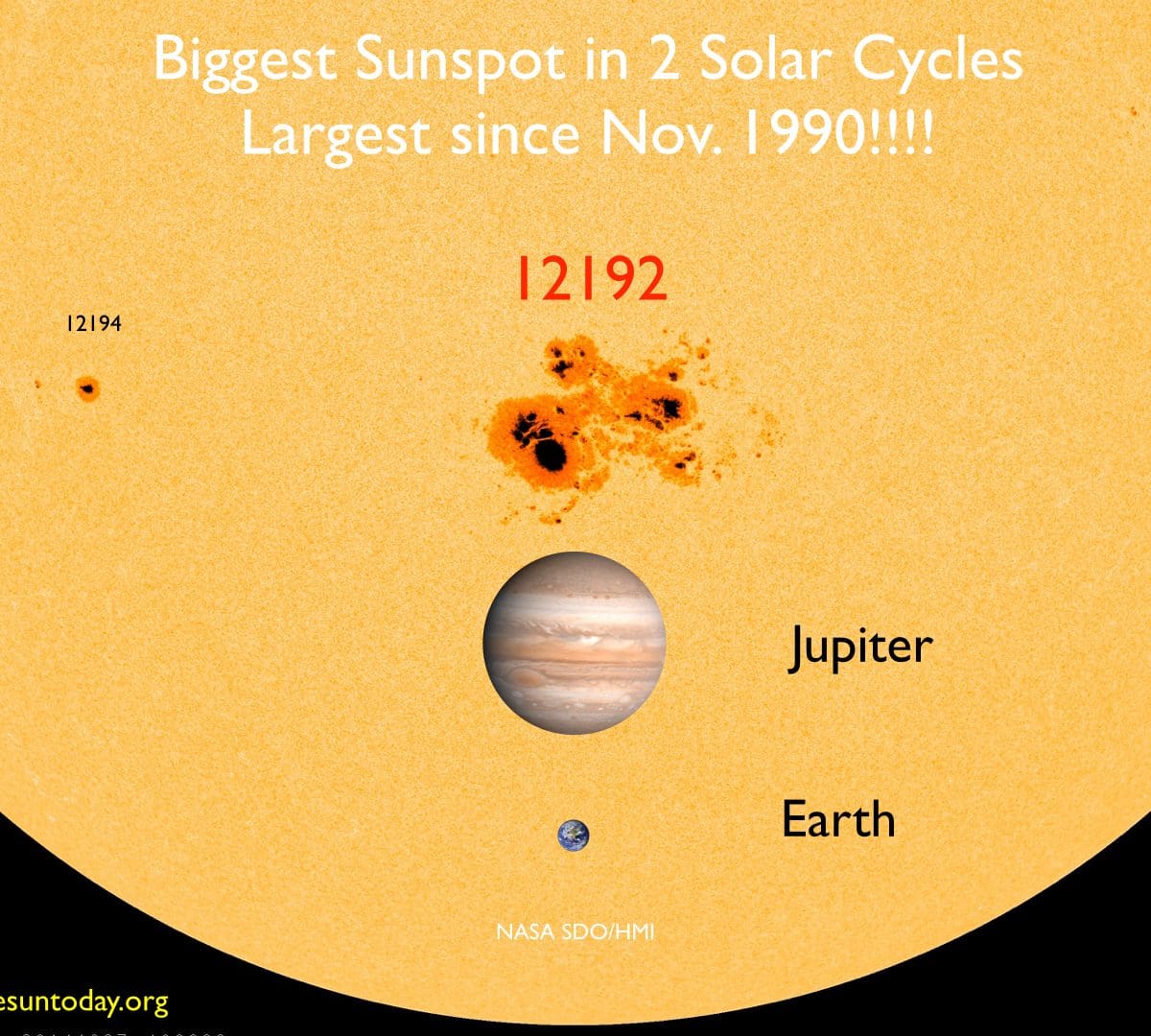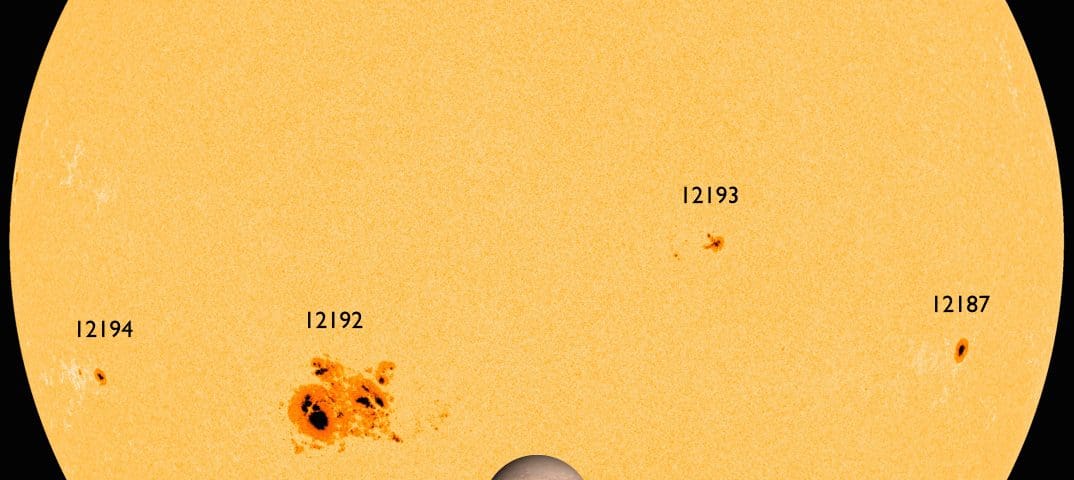
Since rotating into view, the sunspot group AR12192 has continued to grow in size and complexity, becoming the largest sunspot of the current solar cycle, cycle 24 (SC24.) The region has produced numerous C and M-class flares including an X1 flare.
As of Oct. 22, 2014 (11 UT) the region’s trailing spots have an area of 2410 MH or millionths of a visible solar hemisphere. The largest sunspot up until now had been AR11967 on Feb. 5, 2014, measuring 1580 MH. MH is a standard measure used by astronomers for sunspot area. A sunspot that measures 300-500 MH is generally considered big. Just to provide some scale, the surface area of Earth is 169 MH. This means that AR12192 is 14 times larger than the surface area of Earth.
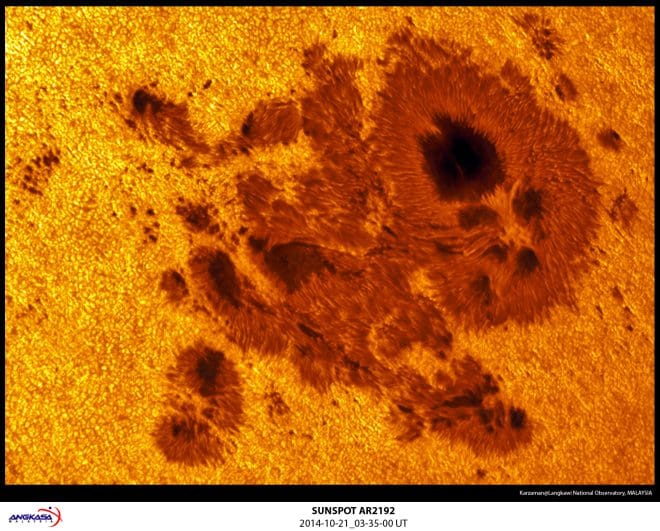
Monster Sunspot AR12192 taken by Karzaman Ahmad on October 21, 2014 from Langkawi Nagtional Observatory, Malaysia credit: Karzaman Ahmad and shared at spaceweather.com
Here is a table showing the largest 6 sunspots from the current solar cycle, cycle 24 (SC24.)
| Year | Month | Day | Active Region # | Area (MH) | Largest Flare |
| 2014 | Oct | 22 | 12192 | 2410 | X1 |
| 2014 | Feb | 5 | 11967 | 1580 | M5 |
| 2011 | Nov | 5 | 11339 | 1540 | X1 |
| 2012 | Jul | 13 | 11520 | 1460 | X2 |
| 2011 | Sep | 25 | 11302 | 1300 | X1 |
| 2012 | Mar | 8 | 11429 | 1270 | X5 |
A famous giant sunspot is AR9393. On March 29, 2001, the region measured 2440 MH, just slightly bigger than AR12192.
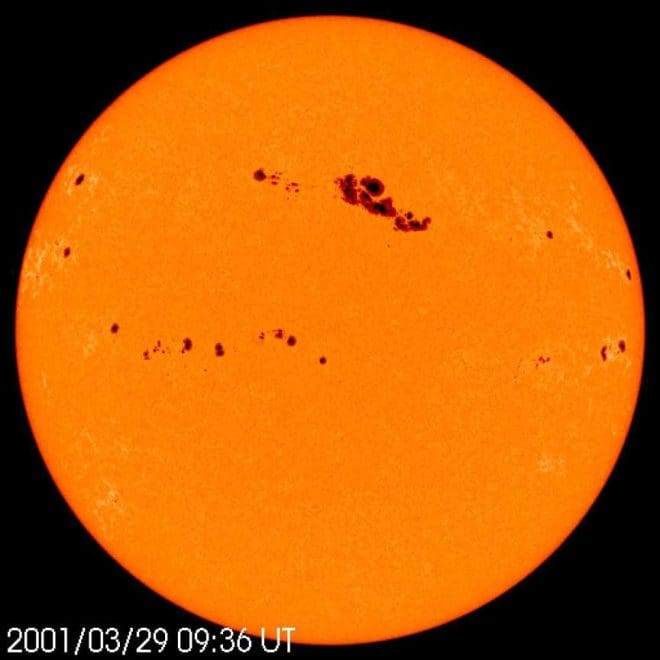
A view of the sunspot covered recorded by the SOHO/MDI instrument from March 29, 2001. Included on the sun is the famous giant spot, AR9393 near the upper middle portion of the solar disk. credit: ESA/NASA/SOHO/GSFC
Later in that solar cycle, cycle 23 came a bigger sunspot, AR10486 (2610 MH) from the famous Halloween Storms of 2003.
But even this monster spot is not the biggest. Two larger sunspots of note are the spot of March 1989 that triggered the infamous geomagnetic storm that crippled the Quebec, Canada power grid and the Great Sunspot of 1947, which came in at a whopping 6000+ MH or 3 times AR9393. David Hathaway of the NASA Marshall Space Flight Center solar physics group created a graph showing the size of the largest individual sunspots each year from 1900 to 2000.
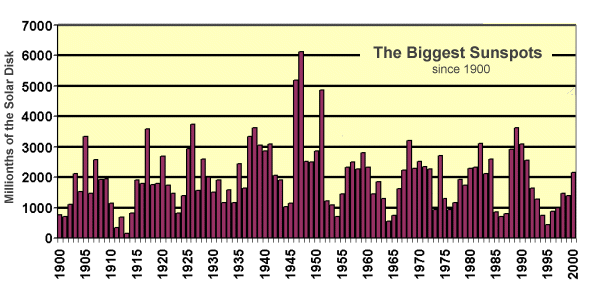
Largest sunspots per year from 1900 to 2000 measured in MH or millionths of the visible solar disk credit:NASA/MSFC/Hathaway
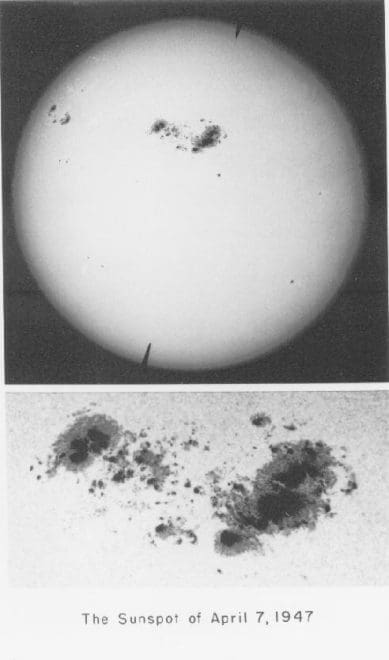
Here is a photo of the Sunspot of April 7, 1947 – The Great Spot of 1947 credit: University of Southern California website, copyright Carnegie Institution of Washington
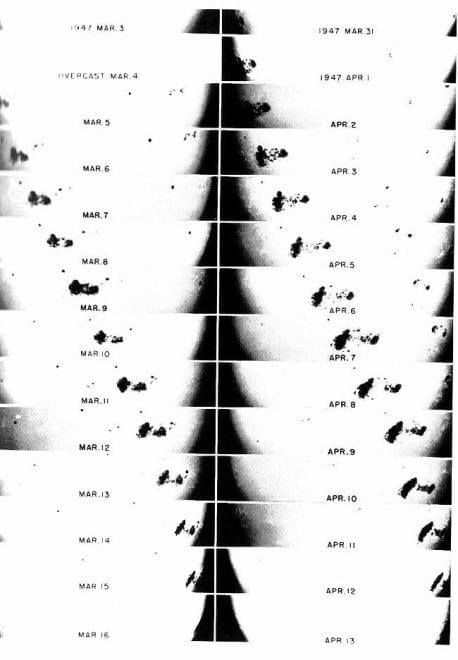
Evolution of the Superspot of 1947. Found at http://www.eaas.co.uk/news/solar_features.html. Original source unknown.
credit: NASA/GSFC/MSFC/SDO/spaceweather.com/helioviewer


